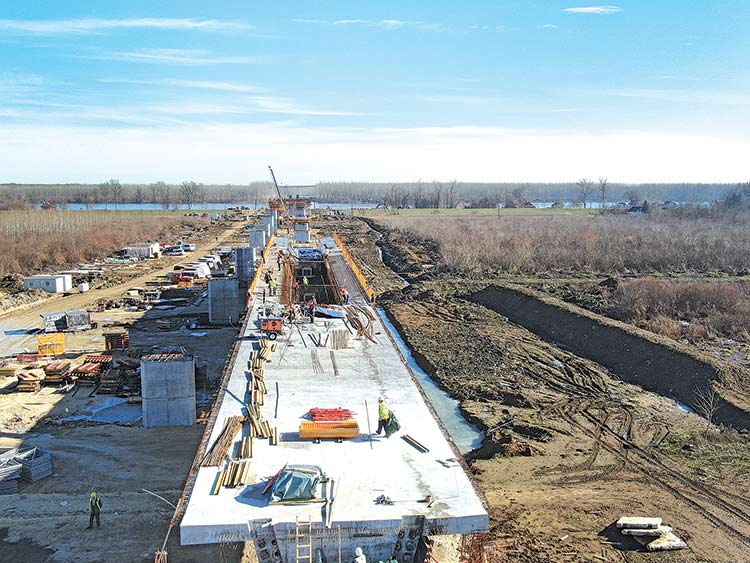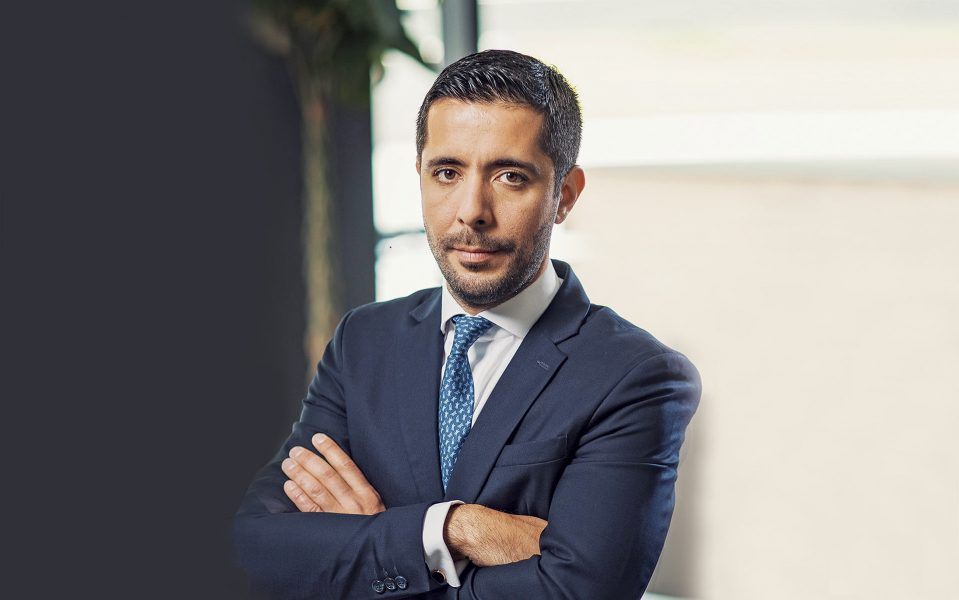The unobstructed continuation of work on the largest infrastructure projects and the launch of new ones is a priority for the State of Serbia, because that is a huge investment in the future of this country and the maintaining of its economic competitiveness in Europe and around the world.
This is an historic juncture in the construction of the entire infrastructure of Serbia – says Serbian Construction, Transport and Infrastructure Minister Tomislav Momirović. Following this simple statement is the listing of a series of projects that should place Serbia on the transport map of Europe and accelerate economic growth in the country and the region. “We wish to enable faster connections, the arrival of investors and the creating of the highest possible number of opportunities for cooperation and opportunities to make gains in the Western Balkans,” says our interlocutor.
Will we succeed in meeting the goals set for 2021 with the current dynamics of works?
All of the large infrastructure projects have their own dynamics of implementation, and we very carefully monitor the progress and haven’t recorded major delays. This year, we have to open the high-speed railway to Novi Sad, complete the largest part of the Belgrade Bypass and extend the Miloš Veliki Highway to Požega. We are constructing the Moravian Corridor, then the Požega – Preljina, Kuzmin – Sremska Rača and Ruma – Šabac sections. I hope that we will this year launch construction of the Fruška Gora Corridor, then the Požega – Boljare, Veliko Gradište – Golubac roadways and the Zrenjanin – Belgrade highway. We are working with the world’s largest companies in the area of infrastructure construction. On the basis of interstate treaties and bilateral agreements, we have engaged Chinese companies CRBC, CCCC-CRIC and SHANDONG, Russian giant RZD Railways, Turkey’s TASYAPI, Azerbaijani company AZVIRT, global corporation BECHTEL ENKA, STRABAG and France’s Aegis Rail, for the Belgrade Metro.
Despite the ever-increasing cross-border connectivity between the European Union and the Western Balkans, there are also growing obstacles to the unobstructed flow of goods. What can Serbia do to eliminate such challenges and where does it need support?
Our interconnectivity within the region is the imperative of all imperatives. This isn’t merely part of my personal agenda, but also the agenda of the Government of Serbia and Serbian President Aleksandar Vučić. Serbia has launched the largest investment cycle in the history of Serbian passenger and transport infrastructure, and has done so precisely because it will enable the entire region to connect faster, the arrival of investors and the opening of the largest possible number of opportunities for cooperation and financial returns. Our investments in the modernisation of road, rail and inland waterway transport, as well as in the adaptation of all transport standards, will contribute greatly to connecting the European Union and the Western Balkans. Serbia is not an island, and every dinar and euro of ours that we invest in infrastructure will be felt across the entire region.

We are very proud that Belgrade has been selected as the base of the Permanent Secretariat of the Transport Community, and we are there for every project that leads to the integration of the region, joint work and connecting with the European Union. This community of ours, and all the efforts that we exert within it, practically make us part of the common European transport market, which is a big thing for the entire region. While politicians wage their own battles, the economy is progressing along its own course, and our goal is to have strong local economies and for investors to come to a territory that is secure, ready for investment and harmonised with the most modern European standards.
In addition to the road and rail network, the market for the construction of housing and business premises is also very active in Serbia. What do existing trends tell us about inflows of foreign investments in this segment?
Serbia has for years been recording record-breaking statistics on foreign investment in the construction sector and commercial real estate. The COVID-19 period halted this trend, but there is visible interest in continuing the construction of large business premises, particularly in Belgrade. It is a thankless endeavour to predict the direction in which this segment will move, because it is correlated with global financial trends, but the Government of Serbia is doing everything to open our country for investment and business operations.
Our interconnectivity within the region is the imperative of all imperatives. This isn’t merely part of my personal agenda, but also the agenda of the Government of Serbia and Serbian President Aleksandar Vučić
A lot was done to improve the process of issuing construction permits during the government’s previous term. What is your aim when it comes to further digital transformation in this sector?
Serbia deservedly entered the ranks of the world’s top ten countries in terms of ease of issuing construction permits, and of course it is my desire for this trend to continue. The statistics of the central record of unified procedures for issuing construction permits recorded the impact of the global pandemic on the number of applications for issuing permits, but even there we’ve also recorded encouraging growth. The digital transformation of the state administration as a whole, including the construction segment, is high on the list of priorities of this Government and we will strengthen capacities in this sector.
The construction sector is considered as one of those that has been least affected by digital transformation, despite it actually being the subject of strong innovations around the world. Why is that the case; and what can the state change in this area?
This is a question for construction companies themselves, while the state is exerting great efforts to meet the goals of its “digital” agenda, which should ease the daily lives of citizens and the operations of businesses.

A letter that was sent to you last year by the Foreign Investors Council stated that noticeable interest in inclusion in the new cycle of further developing infrastructure projects in Serbia exists among foreign companies and investors. What are you doing to generate interest in investing among these kinds of companies?
At the ministry, our doors are always open and we are ready for discussions and joint work on public-private partnership projects or some other modes of engagement and cooperation. We have the largest world and European financial institutions as partners on infrastructure projects in Serbia, as well as some of the biggest names among private companies. Their positive assessments and experiences represent the best recommendation for working in Serbia.
We have the largest world and European financial institutions as partners on infrastructure projects in Serbia, as well as some of the biggest names among private companies. Their positive assessments and experiences represent the best recommendation for working in Serbia
The same FIC letter also included several suggestions for improving the economic environment related to the issuance of construction permits. Which of these initiatives could the ministry adopt? We always consider Foreign Investors Council initiatives carefully, and maintaining a dialogue with the private sector is very important to us. We invested a huge amount of energy and resources during the COVID-19 Pandemic in order to preserve jobs, while the private sector and citizens received huge funds as assistance. The unobstructed continuation of work on the largest infrastructure projects and the launch of new ones is a priority for the State of Serbia, because that is a huge investment in the future of this country and the maintaining of its economic competitiveness in Europe and around the world.
We are also seeing the expansion of the capacities of ports in Belgrade, Smederevo, Prahovo, Bogojevo and Sremska Mitrovica. How much interest is there in using them within the corporate sector?
The plan of the Government of Serbia and MGSI is to connect the Danube and Sava rivers with road and railway Corridor 10 by 2024. We will also connect Serbia regionally, via waterways, with Germany, Austria, Romania, Bulgaria, Russia and Turkey. Upon the completion of all planned projects, Serbia will have constructed modern port infrastructure, fully regulated waterways of the Danube and Sava, as well as a modern system of navigation safety management. The value of projects in water transport at this juncture stands at 380 million euros, and when we add to this the investments of future concessionaires in Serbian ports, the total value of these projects will reach the amount of 500 million euros. With current and planned projects that will raise the total level of investments to close to half a billion euros, Serbia is – together with Belgium and the Netherlands – the absolute leader in investments in the development of water transport. This level of investment testifies to the real plans and real needs of the state and the private sector.
| SYNERGY Serbia is not an island, and every dinar and euro of ours that we invest in infrastructure will be felt across the entire region | DIGITALISATION The digital transformation of the state administration as a whole, including the construction segment, is high on the list of priorities of this Government and we will strengthen capacities in this sector | INVESTMENT With current and planned projects that will raise the total level of investments to close to half a billion euros, Serbia is – together with Belgium and the Netherlands – the absolute leader in investments in the development of water transport |
|---|